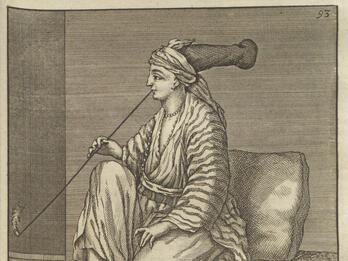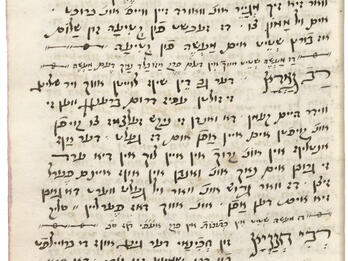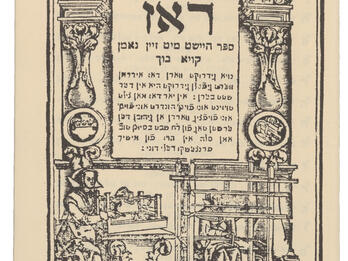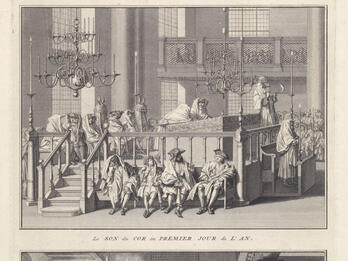The West Indian Tale
Unknown
ca. 1665
Published in a booklet without a title, place of publication, or date, this anonymous Yiddish tale draws on Jewish and non-Jewish sources, both written and oral. Only one copy of the booklet has survived. Its printing style indicates that it was published in Prague, probably in the 1660s. Although the title page indicates an exotic setting—the West Indies—the story itself makes no mention of this location. The complex tale, which includes various subplots, can be divided into two main sections. In the first, at his wife’s insistence, the unnamed hero rectifies his lack of religious education. Subsequently, he begins to practice the commandments, giving charity generously. As a result, he falls upon hard times. Leaving his wife in the care of his rabbi, he sets out on a journey. In the second part, the hero travels to a faraway place and marries a demon queen, who later bears his son, Solomon. After living with her for seven years, he remembers his first wife. His journey home is also replete with adventures. The story ends with a happy reunion between husband and wife.
Related Guide
Early Modern Jewish Languages
As Ashkenazi and Sephardi Jews migrated eastward, Yiddish and Ladino emerged as distinct languages. Both languages developed literary traditions, as print became more widespread.

Related Guide
Early Modern Literature and the Arts
Jewish literary creativity flourished in the early modern period, dominated by Hebrew poetry that blended religious themes with Renaissance forms.
You may also like

Tales from the Mayse Book
Ayelet ahavim (Hind of Love)
Sefer ma‘aseh nisim (The Book of Miracles)
Book of Fables

Ku-bukh (Book of Cows)



